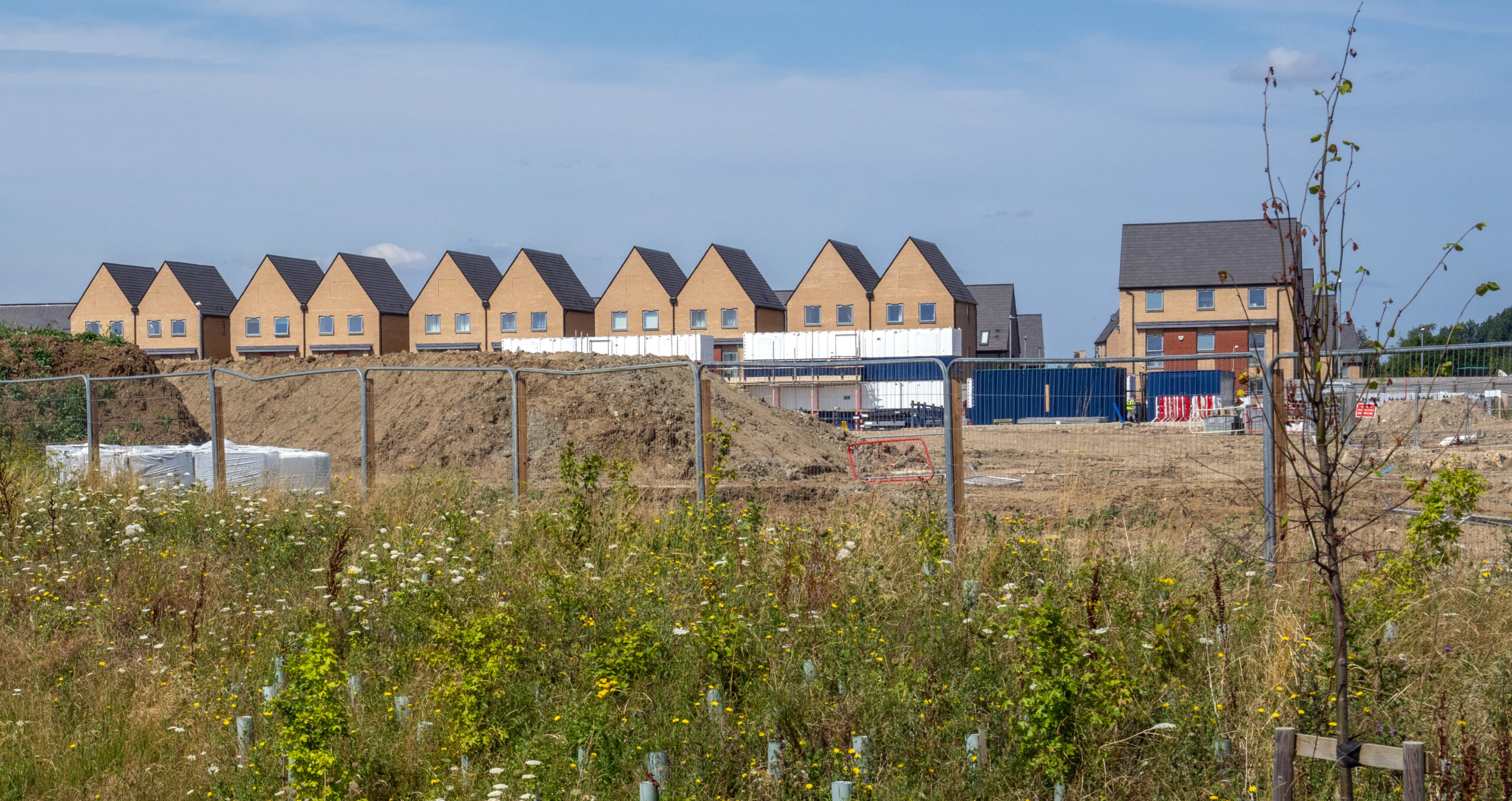
Threadbare council finances threaten to undermine biodiversity net gain in England

A UK law requires housing developers to deliver a 10% net improvement to biodiversity on their sites, but delivery may be problematic
New regulations compelling housing developers to improve their biodiversity measures may be hobbled by a lack of resourcing and expertise, as well as lacking ambition, say experts.
On February 12, a law entered into force in England – enshrined under the Environment Act 2021 – requiring developers to improve the biodiversity net gain of their sites by 10 per cent. The BNG rules oblige developers to leave sites with better biodiversity than when they began operations, as measured in terms of biodiversity “units” that consider the size of a habitat, its ecological importance and its condition.
According to the law, developers can achieve BNG with onsite or offsite units generated by measures such as planting trees or creating a pond, either on the same site where the houses are being built or elsewhere. These units can also be bought from landowners via intermediaries in the private sector or, as a last resort, developers can buy statutory biodiversity credits from the government, which will reinvest the proceeds in habitat creation in England.
Statutory credits are intended to be used only when developers cannot deliver BNG either on or offsite so have been intentionally priced to disincentivise their use, the government says. They start at £42,000 a credit for grasslands and wetlands, rising to as much as £650,000 a credit for certain types of lakes.
“[The government has] set that price pretty high,” Rich Fitton, director at environmental consultancy Finance Earth, told Sustainable Views. “As a housing infrastructure developer you wouldn’t really want to have to pay that.”
The government has committed £10.6mn to help local authorities build the teams of ecologists needed to oversee the initiative, but there are fears that councils’ current resourcing shortfalls could undermine their ability to monitor BNG. According to the Local Government Association, councils have incurred a 27 per cent real-term cut to their core spending power since 2010 and without changes face a general £4bn funding gap.
“Local authorities across the country are pretty cash-strapped and basically over the past 20 years have been decimated,” Fitton said. “They’ve lost their ecologists; they don’t have any in-house expertise in this area. There’s a concern that local authorities aren’t going to be able to do it, or if they do there’ll be a lack of consistency in how those covenants are enacted and managed.”
Differing levels of readiness
Although the principles of BNG exist in other countries, including in the US, Australia and Germany, England is the first country to mandate BNG. The law will apply immediately to major developments – defined as 10 houses or more or a development on a site larger than one hectare – with small sites coming under its scope from April 2. Habitats created through BNG must be maintained for 30 years.
“Some developers are seeing it as a tax on developing, for others it’s a real boost for their ESG credentials and they’re completely on board,” Chris Scott, chief commercial officer at Biofarm, a provider of off-site BNG units, told Sustainable Views.
Biofarm also flagged the funding shortfall faced by England’s 317 local authorities as a challenge. “Our biggest concern is the resources that local planning authorities have in order to police this [and] deal with it in an effective manner,” Scott added. “There’s a very different level of readiness from one planning authority to another.”
The government’s preferred choice is for housing developers to improve BNG onsite but, says Scott, onsite net biodiversity gains, unlike those created away from housing developments, will not have to be listed on a register operated by Natural England, a public body that advises the government, and therefore may be subject to less oversight.
Not ambitious enough
Even prior to the new rules on BNG, “some local authorities have struggled to monitor and enforce existing planning conditions for biodiversity”, Rachel Hackett, living landscape development manager at the Wildlife Trusts charity, told Sustainable Views. The new law “requires a whole new skill-set”, she added. “It’s not just planners and ecologists we need; we need good finance people.”
Given that under the Global Biodiversity Framework signed at COP15, the UK and other governments from around the world agreed to protect 30 per cent of land by 2030, the 10 per cent BNG target is “quite marginal”, said Hackett.
“The Environment Act sets the 10 per cent requirement as a minimum, not a ceiling, and so we need policy and guidance to enable, not stifle, developers and local planning authorities going beyond 10 per cent,” she added, recommending 20 per cent as a better aim.
Fitton at Finance Earth also questioned whether a 10 per cent gain is sufficient. “If you look at other markets for BNG around the world, there’s a lot of evidence that the failure rate is higher than 10 per cent,” he said. Vandalism, fire or habitats not growing as expected are all reasons why a project may not deliver.
A lot of people think that 10 per cent won’t be enough to compensate for this failure rate, Fitton observed. “I think 20 per cent [or] 30 per cent would have been better, but 10 per cent is better than nothing. Hopefully, over time we can increase it.”
Similar Articles

A UK Labour government should lift £3.3bn cap on ‘local power plan’ and invest in community-owned energy

In Brief: EU parliament rubber-stamps CSDDD; US imposes strict rules on carbon pollution from power plants


